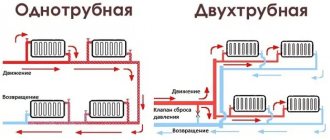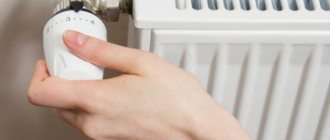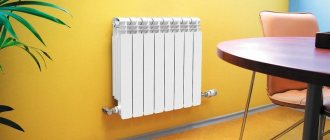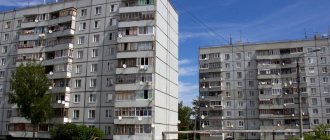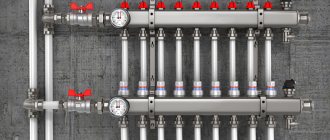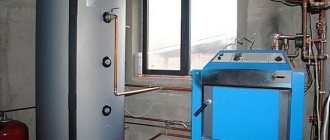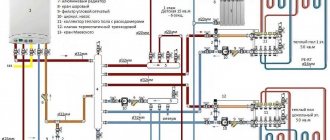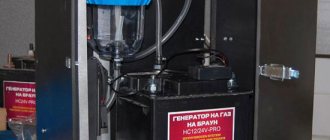What are the reasons for uneven heating of radiators
Batteries are an essential component of residential heating systems. It is their serviceability that determines how warm the rooms will be. With proper connection and proper operation, radiators can effectively heat the air in large rooms and maintain an optimal temperature for a long time. However, what should you do if the top of the radiator heats up perfectly, but the bottom remains cold? First of all, you need to figure out why this happens.
The part at the bottom of the batteries heats up worse
Let us immediately remind you that most battery models are designed in such a way that during operation their lower part heats up somewhat worse. This can be explained by the high degree of heat transfer - while the water is in the radiator, it has time to cool down a little before it begins to flow out of the batteries. As a result of this principle, the upper part of the device will always become hotter. Thanks to this, there is no need to worry if, during operation of the heating elements, their surface does not heat up completely equally.
It's worse if you touch the device and see a large temperature difference. This directly indicates that the radiator was not connected correctly, or the liquid in it is moving at insufficient speed. In the first option, the professional most likely mixed up the outflow and water supply pipes. Many real estate owners face a similar situation. The basis is the lack of professionalism of the called technician or an attempt to attach the radiator with your own hands. In another embodiment, the bottom of the radiator is cold due to the low speed of water flow in the middle of it. In this case, the liquid can cool completely before flowing out of the element.
Why is half the battery cold?
When the radiator is not connected correctly.
The main reason why the battery is half cold may be that it is connected incorrectly. According to the rules for installing heating equipment in a heating circuit, the pipe supplying hot coolant must be connected to the top of the battery. The cold pipe or return, on the contrary, is to its lower part. Also read: “Radiator brackets.”
How can we explain this?
You need to take into account the laws of physics and remember that hot water is much lighter than cold water, and therefore is located in the upper part of the heating device. Gradually releasing its thermal energy to the surrounding air, the coolant cools down. Its density, and hence its weight, increases. He goes down. That is why often half of the battery is cold and half is hot.
In any case, if the radiator is half cold, you need to seek help from a specialist rather than try to solve the problem yourself. This can lead to equipment damage or injury.
Low coolant temperature.
The heating device was installed correctly, but still half of the battery is cold. What to do in this case? Very often, especially in frosty weather outside, the coolant enters the heating circuit at an insufficiently high temperature. Giving up heat to the heating element, it cools down completely. This is why the effect of a cold radiator from below is created.
Contamination inside the heating device.
Debris, rust, as a result of corrosion of the inside of the heating circuit, can lead to the fact that the batteries are half cold. What to do in such a situation? Before the start of the heating season, especially if the thermal distribution was organized several decades ago, it is necessary to clean the radiators. To do this, a locksmith from the relevant service is called and he performs all the work.
Things are worse if the radiators do not heat up after the start of the heating season. In this case, the riser of an apartment building or the heating circuit of a private building is completely taken out of service. After all, it is possible to remove contaminants from the radiator only when there is no coolant in it.
Air jams.
They may be the reason why half of the battery is cold. It is easy to check their presence if the supply pipe and return pipe of the heating element are equipped with ball valves or thermostats. They are simply blocked. Then the upper tap is opened while the lower one remains closed for only 10-15 seconds. If extraneous sounds and gurgling are heard when the coolant enters, there is air inside the heating element. It prevents the free circulation of hot water, so half of the battery does not heat.
The problem can be solved by simply bleeding the air. For this purpose, heating devices are equipped with a Mayevsky tap or an ordinary tap in the upper part. A container for collecting hot water is first installed under the locking mechanism. The Mayevsky tap opens and remains in this position until all the air leaves the heating device. The process is accompanied by spraying hot water under pressure. That is why it is recommended to cover the tap with a cloth.
The cross-section of the supply pipe is narrowed.
The heating element is installed correctly, it is new and there is no air inside, and the battery is half cold. Reason: a thermostat or tap with a narrowed flow area is installed. What does it mean? Through a pipe with a narrowed cross-section, half the coolant enters the radiator. As a result, the speed of water movement in the radiator decreases, and therefore the temperature of its surface decreases.
What needs to be done?
Dismantle the taps in front of the heating element. Before choosing a new device, be sure to consult a specialist. He must calculate the required cross-section of the valve, which will not affect the movement of coolant in the circuit.
Full room heating
The air temperature in the room will always be low if half of the radiator is cold, half is hot. The reason for this may be improper installation of the radiator, the presence of a tap in front of it with a narrowed cross-section, dirt and air inside the heating element. Any problem can be resolved if you seek help from a specialist. It is not recommended to carry out repairs yourself, as this can lead to equipment failure or injury.
>
Prevention
To avoid problems with air locks, it is necessary to install air vents at each group of heating elements. So, for example, to remove air from the boiler, an automatic valve for removing gases is mounted directly on it. All collectors are also equipped with it. Mayevsky taps are installed on the radiators at the end.
If, after bleeding the air, the radiators still do not heat up well, the coolant should be completely drained. Since it is possible that there is too much dirt in the network, and it significantly reduces the circulation of fluid in the batteries.
What to do if the batteries are clogged
A clogged heating radiator is a common problem when operating batteries, which leads to various troubles. Dirt accumulates inside the devices due to poor quality coolant and the presence of air. This is especially true at the beginning of the heating season. When heating starts and stops, look here.
In self-contained circuits that do not rely on central heating, dirt and debris can enter through an open hydraulic tank. Particles and batteries settle at the bottom and in the nooks and crannies of the battery, resulting in disruption of coolant circulation. The batteries begin to heat up worse. A severe blockage leads to the fact that the radiators become completely or half cold.
Clogging also occurs due to the accumulation of excess air and the formation of an air lock. Modern bimetallic batteries are easy to maintain. In this case, you can remove excess air by opening a special tap. If the problem is an air lock, a hiss will follow from the hole. If the problem is different, coolant will flow from the tap. In this case, immediately close the tap.
For old cast iron batteries such a faucet is not provided. If there is an air lock, you will have to look for the coupling, which is located at the connection of the pipe with the approach to the radiator. Turn the coupling and dirty coolant will flow out of the tap. Drain a little and twist back. To avoid staining the floor, place a container under the coupling first. Do not unscrew the coupling completely, otherwise there is a risk of flooding!
Clogging
The most common reason for this phenomenon is clogged radiators. Here are other reasons why there is a strong temperature difference in the battery: low quality coolant and air getting inside.
This phenomenon can also be affected by the liquid inside the radiator, since it contains various solid particles. While the heating season is just beginning, excess elements may be present in the water, which makes its quality terrible.
If there is an individual heating circuit, then the water will not have such disadvantages.
Why can air affect the temperature at the top and bottom of the battery?
- Because special bacteria are involved that can only live in an environment saturated with oxygen.
- Such bacteria are also called anaerobic.
- Microorganisms themselves do not cause harm to the radiator.
- The damage is caused by their waste products, which settle at the bottom of the radiator as sediment.
Also, silt can settle at the bottom, which gets there from the entire heating main.
Another reason is the special design of the heat exchanger. Because of this, there are places in its shape where dirt accumulates.
Adviсe
So, if you find that the radiators in the apartment have become cold or not warm enough, we recommend doing the following:
- Determine the type of possible breakdown. If this is a separate battery, then it is necessary to shut off the flow of coolant into this element. This can be done using a supply valve.
- Wait for the liquid to cool and disconnect the damaged, non-functional battery.
- Clean the system or install a new battery.
- Allow coolant to flow in and check the operation of the entire system.
Today, important parameters when choosing radiators and radiators are heat transfer and efficiency. Thoughtful solutions using the quality characteristics of metal make it possible to obtain not only durable, but also more practical elements for heating an apartment or room.
That's why many people strive to replace old cast iron batteries and install modern and more economical ones. In addition, the aesthetic appearance of the batteries is not the least important. Today there is a choice of batteries that are ideal for the interior, creating comfort and coziness in the room.
In any case, when selecting and repairing a heating system, it is important to correctly identify the cause and eliminate it before the onset of cold weather. In this way, it is possible to avoid freezing of the entire system, the repair of which will cost much more than an individual element.
What to do if the radiators in the apartment are cold, see the following video:
Temperature standards in residential premises
Temperature standards in residential premises are determined by law. They are at least +18 degrees and at least +20 in corner rooms. If the temperature is lower, you need to write a complaint to the housing office or to the management organization that provides utilities for your home.
The application is submitted in writing with a detailed description of the problem. Then the technician will take temperature measurements, determine the cause and, if necessary, recalculate the heating tariff. During an emergency shutdown, measurements are not taken.
If the heating equipment is broken or outdated, the owner must replace the radiators himself. To carry out work, you must obtain permission from the Housing Office! If the radiators do not heat due to the fault of the neighbors, the latter must fix the problem and repair the damage.
If the service organization is to blame for the problems, it must correct the violations within seven to ten days. In addition, they are required to recalculate the utility tariff and pay the difference. If the organization does not accept the application or does not want to recalculate, you can write a complaint against the management company. How to do this, see the link.
Questions about housing and communal services The battery in the apartment is cold, what should I do?
To your question “...What should I do? Where to contact? The housing office is not doing anything” - look at the answer to Maria’s question “How to deal with public utilities?” a few days ago. In the Nizhny Novgorod region, it is believed that the most effective way to fight with housing and communal services for your rights is to contact the main “plumber” - the governor of the region. So in one of the articles in the press they write: the increase in the number of complaints from citizens to the governor about the inaction of housing and communal services is evidence of the growth of trust and authority of the governor! True, I personally would like the growth of the governor’s authority to be the result not of an increase, but of a sharp decrease in complaints about housing and communal services. If plumbers do come to you, do not rush to immediately change the battery on their advice! This is their favorite trick - to rip off money for the battery. Demand that they first disassemble and repair the valves or clean the pipes on the supply to the battery. Good luck to you, Irina, and a hot battery! Yuri
You can answer briefly: the reason is the low water flow through the battery. You can answer in more detail, but it will be very long. There can be many reasons:
1. The inlet or outlet pipes of the batteries are clogged with deposits (rust, salts), or the batteries themselves are clogged.2. The valves in the basement through which the direct or return riser are connected to the main pipelines of direct or return water are faulty (or closed). Low consumption of coolant (hot water) throughout the house, or only through the risers of your entrance.4. Insufficient performance (power) of pumps in the boiler room, from which water is supplied to the heating system.5. Poor adjustment (adjustment) of the heating system of the neighborhood or your home.
In any case, contact the house management company. If the plumbers tell you, “We don’t know the reason,” tell them everything you think about these slackers and ignoramuses. If the plumbers do not fix the problem, write a letter of complaint to the house management company, the State Housing Inspectorate, the city administration, or the regional governor.
If there is a craftsman in the family or among neighbors whose “head and hands grow out of place,” show him the following text and ask him to try to determine the cause of cold batteries:
To determine why the flow rate is low, check:
- Are the batteries on other risers in your apartment heated well? - Are the batteries on the same riser in the apartments above or below you heated well? - Are the batteries in the neighboring entrances heated well?
If the batteries on other risers in your apartment, as well as in the apartments above or below, heat up normally, it is most likely that the valves at the inlet or outlet of a poorly heating battery are faulty, or the inlet or outlet pipes of this battery are clogged, or the battery itself is clogged.
If the radiators on the same riser in the apartments above or below you also warm up poorly, but on the neighboring risers it is good - this is most likely faulty (or covered) valves in the basement through which the direct or return riser is connected to the main pipelines of direct or return water . Or maybe the direct or return riser pipes are clogged.
If the radiators on all the risers in your apartment do not warm up completely, this is most likely due to the low flow of coolant (hot water) throughout the house, or only in the risers of your entrance. To make sure of this, go to your friends in another entrance - how do their batteries heat up?
If the entire neighborhood freezes, it’s the boiler house’s fault (CHP)
You can also write to the website, providing as much detail as possible - where and what in your apartment and in neighboring apartments and entrances it heats or does not heat. And what are the specific temperatures at the inlet and outlet of the battery and the air temperature in the apartment. If we can help with anything else, we don’t mind the advice.
Good luck in identifying the reasons why batteries do not heat well!
Incorrect connection and other reasons
We looked at two common reasons why half the battery does not heat up. However, there are many options why the radiator does not work. Each heating system and design is unique. They may become outdated and fail. In addition, correct installation, connection and operation are of great importance. Let's look at what problems you may encounter in this case.
Incorrect position of the valve on the bypass. The bypass is a section of pipe that connects the internal and return coolant supply before entering the radiator. It shuts off the water supply to make it easy to remove, wash or repair the battery, and then put it back
It is important that the bypass is not located far from the device and is in the closed position when the radiators are operating
Illiterate installation of the heating system will lead to many problems. So, the top will be warm and the bottom will be cold. The battery may completely fail and become cold. In addition, incorrect installation can lead to a pipe break and flooding the room with boiling water! Therefore, trust the installation only to professionals, even if it is a simple single-circuit heating Leningradka.
Regular malfunctions in the operation of radiators can be the result of incorrect selection of pipe diameters and radiator parameters, or incompatibility of the boiler and battery. Sometimes devices may be cold at the top or bottom, or may not heat well due to poor manufacturing. Choose reliable and proven products.
In order for the heating to work and heat as efficiently as possible, do not cover or sew up the radiators with anything. In extreme cases, you can install a wooden grille overlay
If the batteries are still protected, it is important that no parts touch the device, otherwise the heat will go into the structural element
Low pressure
Low supply and circulation pressure is often observed in modern narrow radiators due to narrow passages for moving, entering and exiting hot water. The pressure in the pipes may drop in an apartment building due to incorrect or unauthorized actions of neighbors.
The reason for the low pressure may be the illegal installation of a water floor connected to central heating, an uncoordinated increase in the number of sections and radiators, installation of a battery on the bypass (backup path) or the use of too high heating temperatures.
Additionally, the top and/or bottom of the battery may be cold due to an accident or problems on the central line. If the heating is turned off for this reason, the service company must fix the problem in residential areas above +12 degrees, at temperatures below ten degrees Celsius - within four hours.
What to do if the engine overheats
First of all, it should be remembered that if the overheating is short-term (for example, the temperature needle rises in a traffic jam), then you should observe whether the temperature will drop after you start driving (counter air flow appears) or as a result of turning on the radiator fan.
If the car was already in motion and the engine temperature reached a critical level, you should not immediately turn off the engine. Also, you should not try to cool the engine by pouring water on it from outside, pouring cold water into the radiator, etc. Such actions will lead to the need to repair the internal combustion engine, and it may be necessary to change the BC and cylinder head.
To “cool down” the engine, you will need to pull off the road (if possible), stop the car and then turn the heater on to maximum, while the engine must continue to idle.
Next, you need to wait a few minutes, while simultaneously inspecting for obvious and strong signs of antifreeze/antifreeze leakage under the car or in the engine compartment. If no leaks are visible, but the temperature does not drop, the unit must be turned off.
Please note that you need to immediately turn off the engine when steam starts coming out from under the hood; traces of intense coolant leakage are clearly visible. In this case, the engine must be stopped, without expecting that turning on the stove will reduce the heating
https://youtube.com/watch?v=0swgbqh-RkU
Solving key difficulties with a radiator and how to deal with problems
If you start to wonder: “Why is the heating radiator in the room at the top hot and cold at the bottom?”, then it’s time to take the necessary measures without delay.
Properly connected battery
To determine the cause, follow the following algorithm:
- it is necessary to check the accuracy of the pipe connections;
- look at the radiator itself;
- release the air and clean the device;
- it is necessary to check the condition of the valves for adjustment;
- look through the pipes;
- the pump needs to be checked.
Cold batteries, possible reasons why the radiator does not heat
The initial stage requires checking the correctness of the connection. First, estimate the temperature of the pipe section at the bottom of the radiator. If the device was connected incorrectly, the lower section of the pipe will be hot. To solve the problem, you need to turn off all the pipes and reconnect them according to the above principle. If you do everything correctly, the lower section of the pipe will be barely warm.
Very often, an air plug will appear in the radiator, which interferes with the normal heating process of the element. In order to solve the problem, the device must have an air vent or a separate seal for releasing air. To purge, you need to close the air supply, fully open the drain and release all the air. Afterwards, the tap must be returned to its previous position and the system valves must be turned. In most cases, this procedure gives the desired result.
If the system is equipped with an adjustment valve, then the problem may lie there. Remove the faucet and inspect it carefully. If you see a narrowing of its end, you will need to return the part to its original diameter using pliers. Most experts advise replacing the faucet immediately in order to increase the effective operation of the system.
If there is no tap, then most likely the problem is hidden in the pipes. We recommend removing the channels with a specialized removable wrench and cleaning them from corrosive damage and other contaminants. If the pipes are no longer suitable for use, replace them with new ones.
Often there is no high pressure in the system due to its design properties. You should find out about this when you buy a living space or a private house. To increase this indicator, change the outdated pump or purchase one if there is no pump as such. This will increase the speed of movement of the coolant and ensure more efficient operation of the entire system.
Thematic publications:
The heating radiator does not warm up completely!
Heating scheme of a one-story house with forced circulation
Why does the pressure in the heating system decrease?
The heating radiator is hot on top and cold on the bottom.
Problems with the heating circuit
The pump must be selected according to the requirements of the heating circuit.
Malfunctions in the operating mode of the heating circuit are not always associated with a malfunction of the main heating element. If the boiler works, but does not heat the batteries, the reason must be sought in the wiring itself.
List of main heating circuit malfunctions:
- the filter on the return line or the needle tap (Maevsky tap) is clogged;
- insufficient power of the circulation pump;
- the rules for installing a heating circuit with natural circulation have not been followed.
Any of the above problems must be resolved before the start of the heating season. Otherwise, the room may be left without heat for several days, since the repair involves completely draining the coolant.
So, why doesn’t the boiler heat the batteries if everything worked fine over the previous years? The reason is a dirt plug that has formed on the heating circuit filter and completely blocks the coolant flow. It can be solved simply - the water is drained from the pipes or its circulation is blocked using bypasses, and the filter is cleaned. To prevent a recurrence of such a situation, it is necessary to completely replace the coolant with parallel flushing of the entire circuit.
In a gravity system, the slope of the pipes is key.
The second reason why the boiler works but the radiators are cold is the insufficient power of the circulation pump. The performance of the device is not enough to pump the entire volume of coolant in a timely and efficient manner. Or the heating system in the house has branches that are located at a significant distance from the pump. As a result, the circulation pump overheats, the heating equipment operates with excessive energy consumption, and the radiators remain cold. The solution is to change the coolant pumping device to a more powerful one.
If the house has a two-pipe heating circuit with natural circulation of water, and during the heating season it is often noticed that the boiler is on and the radiators are cold, then the reason lies in non-compliance with the slope of the main line. According to regulatory documentation, only a pipe slope of 10 mm per linear meter in a heating system with natural circulation will ensure normal coolant movement. The result is uniform heating of the batteries throughout the house. If there is no slope, the coolant stagnates, which negatively affects the temperature of the radiators. The problem can be solved by completely redoing the wiring.
Heating system efficiency
- The main reasons for uneven heating
- How can this be dangerous?
- Ways to solve the problem
The main reasons for uneven heating
Batteries are an integral element of the room heating system, and the comfort of operation of residential and public buildings or various industrial buildings depends on its serviceability.
The most common reasons for uneven heating of heating radiators are: insufficient power of the circulation pump;
- failure to comply with slopes and angles during the installation of the pipeline system;
- incorrect thermostat mode; air lock;
- battery distortions.
Correct calculations of the power of the heating boiler, as well as commissioning of the heating system, are of no small importance. Consider the fact that a slight temperature difference between the lower and upper parts is not a deviation
You should worry about a significant decrease in heating, it negatively affects the efficiency of the radiator
Please note that a slight temperature difference between the lower and upper parts is not a deviation. You should be concerned when the heating decreases significantly; it negatively affects the efficiency of the radiator.
How can this be dangerous?
The uniform heating of radiator batteries directly depends on the balance of the speed of the coolant and its temperature regime.
Incorrect operation of the heating system can cause:
- quite strong and unpleasant noise and vibration;
- disturbances in the acid-base balance of the thermal fluid;
- increasing the corrosive effect on heating elements;
- noticeable reduction in service life, as well as failure of batteries.
Ways to solve the problem
Not all heating system problems can be solved on their own. However, there are ways to bring radiators into working position.
To eliminate uneven heat output, you must perform the following steps:
- Bleed air from the heating system.
- Install an automatic air release valve.
- Install a circulation pump of sufficient power.
- Adjust the bypass.
It is important to annually flush the radiators and core, which very often become clogged during operation. If you cannot achieve uniform, stable heating of the radiator batteries on your own, then you should not delay in inviting qualified plumbing workers who can cope with problems of any level of complexity. published econet.ru
If you cannot achieve uniform, stable heating of the radiator batteries on your own, then you should not delay in inviting qualified plumbing workers who can cope with problems of any level of complexity. published econet.ru
If you have any questions on this topic, ask them to the experts and readers of our project here.
Human factor
A person can also become the direct cause of a non-heating radiator. And usually they are as follows:
- A riser that they simply forgot to turn on because “it was late and the plumbers were tired.”
- Closed valve of the automatic air vent system.
- Incorrect connection during installation.
- Child-closed three-way valve.
They can be solved by calling the appropriate support service, correctly connecting the battery (or bypass, see below), and carefully checking the taps.
Useful tips
When starting the stage of restoring heating efficiency, you need to analyze the situation and determine the cause of the problem. The course of action is as follows:
- Check the correctness of communications.
- Check for air in the system and, if present, release it.
- Inspect the heating device and clean the internal cavity.
- Assess the functional condition of shut-off valves and control valves.
- Determine the performance of the system, if necessary, change or install a more powerful pump.
If you find a situation where the bimetallic radiators are very hot at the top and cold at the bottom, it is worth checking the control valves (if any are provided for in the project). It is necessary to immediately remove such a unit and conduct a detailed inspection. If deposits are found that narrow the cross-section, they should be removed. However, the best option would be to replace the part with a new one.
Low system pressure also does not contribute to efficient heat transfer. This may be due to the pump, or its absolute absence. Therefore, it is not without reason that experts advise installing modern equipment. This is the only way to obtain high-quality heat supply.
Often on construction forums people complain about heating systems - the bottom of the radiator is cold and the top is hot. It is worth noting that any radiator on top is warmer than on the bottom, but if the gap between these temperatures is too large, then most likely there is something wrong with the system.
Moreover, this means that the battery provides less...
Do-it-yourself troubleshooting (step-by-step instructions)
The reasons for the malfunction of the heating system, indicated by a large difference in the temperature of the top and bottom of the radiator, are considered. It remains to decide on a plan of action when they arise. It should immediately be noted that it is impossible to eliminate some problems on your own. If you feel cold in the room and detect a strong difference in the temperature of the upper and lower parts of the battery, it is necessary to perform a number of measures in order.
Check and fully open the supply and discharge valves on the battery pipes
If a malfunction is detected, it is necessary to replace the failed components of the shut-off valve being repaired or replace it completely if repair is impossible. Bleed the air lock from the battery, if there is a valve or tap, by placing a suitable container for the liquid and being careful. If there is air, water from the tap will burst out in jerks with a characteristic hissing sound. If bleeding the air does not help, you can start checking and, if necessary, cleaning the radiator from internal contamination
After closing the taps on the pipes and placing a suitable container under the radiator, unscrew the drain plug; the presence of contamination will be indicated by a leaking dark brown substance (almost black). If there is no dirt or air, and provided that before the start of the heating season any plumbing work was carried out on the heating system, you should check that the radiator is connected correctly. If you discover incorrect installation yourself or by calling the experts from a home maintenance company, you must bring the installation of the battery in accordance with the approved diagram. If the pressure and circulation rate of the working fluid are low, when all other checks and measures have been carried out, you need to call the management company or the organization supplying heat to find out the time frame for eliminating the problem. If the room is cold, then it is advisable to wait until it warms up; it is possible that during the owner’s absence the central heating was turned off for some reason. As the room warms up, the difference in heating between the top and bottom may return to normal.
The most important thing is to remember safety measures, since hot water under pressure can not only damage the surrounding interior, but also cause harm to health.
Shut-off valves do not work
Shut-off valves regulate and shut off the operation of the coolant. This includes ball valves, cone valves, thermal heads with electronic and mechanical control.
By the way, experts advise installing thermal heads on each radiator. So, you can regulate the temperature in each individual room. If you configure the system correctly and select the temperature wisely, you will save up to 30% on heating.
On the tap you can observe an arrow that indicates the correct direction of movement of the coolant. If taps or valves are installed incorrectly, circulation will be disrupted. In addition, for proper operation, the damper must be closed.
A malfunction in one of the elements in the shut-off valve disrupts the circulation of the coolant. As a result, the bottom of the radiator or the battery becomes completely cooler. If the last battery is cold or the radiators at the top are warm and the bottom is cold, check the serviceability of the shut-off valves. If there are any defects, contact a specialist.
How to clean clogged batteries
- To clean the radiator from debris and dirt, you will have to remove the device and wash it. Before starting the procedure, prepare the area for cleaning. It is better to clean radiators outside or in the bathroom;
- First cover the bathtub with a thick cloth and insert a protective mesh into the drain hole to avoid damage to the enamel surface of the plumbing fixtures and prevent clogging of the pipeline;
- Close the valves and unscrew the nuts, carefully drain the remaining water, remove the radiator and place it outside or in the bathroom;
- Tap each section with a hammer or mallet to help the rust and plaque fall off quickly. Then carefully shake out any accumulated debris from inside;
- For washing, use a special sealed hose to clean the battery under high pressure. Simply rinsing the device under the tap or in a basin will not clean it. Special cleaning agents can also be used along with water. To be effective, pour hot water into the radiator and leave for half an hour, and then rinse;
- If the radiator is severely clogged, most likely the other radiators are also clogged. In this case, you will have to wash each battery. Many bimetallic radiators are washed extremely rarely, so a large amount of solid particles and debris accumulates inside. In addition, plaque and rust may appear;
- When cleaning yourself, be careful, as you can easily get burned due to the hot coolant. It is better to entrust the work to specialists. If you want to do the procedure yourself, you will find useful tips and tricks in the article “How to clean a radiator.”
New bimetallic radiators have a cold bottom while the top is hot - possible reasons
As already noted, for all models the heating of the lower region is weaker than that of the upper. This is explained by the high heat transfer of the bimetal - the water has time to cool thoroughly during the passage. Hence the temperature difference, which worries owners so much.
When not to worry
But with such insignificant differences there should be no reason for concern - this is a normal situation, given the features of this type of device:
- A single vertical channel in each section (for example, cast iron products have two).
- Small channel diameter (little coolant), but effective heat transfer due to the special configuration of the fins.
- Profiled convection channels between the ribs of the sections contribute to enhanced heat transfer, regardless of whether the battery is made by Italian or Russian.
- The thin walls of the sections heat up quickly, but also cool down just as quickly. Therefore, if you have bimetallic radiators at home and the bottom is cold and the top is hot near the appliances, this property needs to be taken into account.
Probable causes of uneven heat transfer
Despite similar trends, each case must be considered individually
If we ignore three important factors: incorrect calculation of the power of the boiler, pump and number of batteries, then we should take into account the likelihood of the following problems:
- Air jams are an inevitable consequence of measures to fill the structure with coolant. An additional symptom is gurgling or hissing sounds. The solution is the installation of a Mayevsky crane.
- Clogging of heating appliances is the result of neglecting regular flushing of the system, especially in apartments with a central heating system.
- Unsatisfactory coolant circulation - if distant heating units do not heat up well, then it is worth considering this reason, in particular in systems with natural circulation. To solve the problem when bimetallic radiators are hot at the top and too cold at the bottom, installing a circulation pump will help.
- Incorrect operation of the heating structure is a fairly common factor when the bypass is not adjusted. Even experienced home craftsmen who know how to properly install a battery with their own hands make mistakes when performing commissioning work.
- Problems with shut-off valves - proper installation of these units does not guarantee that over time the mechanism or electronic components will not fail.
Does the coolant affect the quality of heating?
Almost all manufacturers of heating devices unanimously recommend not draining the coolant from the system, except as a last resort. And there is an explanation for this.
Batteries may be cold due to air pockets. Each time the system is filled, voids filled with air are formed. Constant circulation of the coolant gradually removes air from the system, removing it through the expansion tank or relief valves.
Therefore, it is better to use old coolant for heating. As a result, even if at first the bottom of the battery was cold, the top was hot, and the sections differed in heating temperature, over time the situation can normalize due to the constant use of the coolant without replacing it.
The optimal solution is to use a special coolant. It corrodes rust and prevents pipes and radiators from becoming clogged, which significantly affects heat transfer and uniform heating.
If independent efforts to achieve uniform heating of the radiator have not yielded results, then you should definitely not delay in inviting a qualified plumber.
Cold batteries in winter are an emergency that requires an immediate solution. To fix serious problems, you should hire specialists, but some problems can be dealt with on your own. Even if the owner of an apartment or house does not intend to repair the heating on his own, it will not hurt him to know about the signs and causes of malfunctions.
